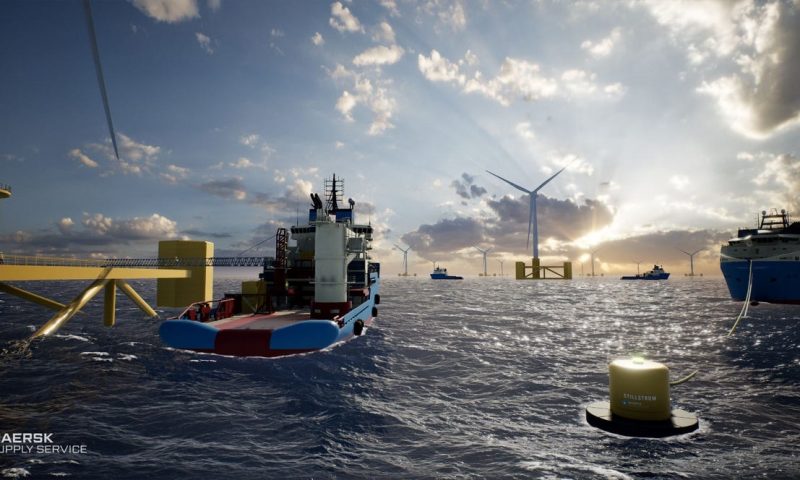
These Floating Charging Points Will Let Ships Draw Electricity From Offshore Wind Farms
Floating Charging Points; Stillstrom Charging Buoy Design
Danish shipping firm Maersk Supply Service is to launch an electricity charging system (Floating Charging Points) that will give ships access to renewable energy while they’re at sea.
The Stillstrom venture comprises a collection of offshore buoys that allow ships to plug into electricity generated by offshore wind farms, as well as onshore power-generation sites. The project aims to cut the use of fuel-burning generators used by ships to power onboard systems while they’re anchored or moored.
Sebastian Klasterer Toft, a project manager for Stillstrom, told Insider that Stillstrom was a “natural solution” to the problem of emissions from idling ships. “That was an issue that we saw in our own fleet,” he said.
Danish shipping firm Maersk Supply Service is to launch an electricity charging system that will give ships access to renewable energy using floating charging points while they’re at sea.
A.P. Møller – Mærsk A/S, also known simply as Maersk, is a Danish shipping company, active in ocean and inland freight transportation and associated services, such as supply chain management and port operation. Maersk was the largest container shipping line and vessel operator in the world from 1996 until 2021. (source: Wiki)
The Stillstrom venture comprises a collection of offshore buoy, floating charging points, that allow ships to plug into electricity generated by offshore wind farms, as well as onshore power-generation sites. The project aims to cut the use of fuel-burning generators used by ships to power onboard systems while they’re anchored or moored.
Sebastian Klasterer Toft, a project manager for Stillstrom, told Insider that Stillstrom was a “natural solution” to the problem of emissions from idling ships. “That was an issue that we saw in our own fleet,” he said.
The first Stillstrom buoy, floating charging points, is to launch off the coast of the UK in 2022

The pilot buoy, floating charging points, is destined for the east coast of the UK, at a wind farm operated by Ørsted, Maersk’s partner in the Stillstrom venture.
The buoy will be tested by one of Ørsted’s service operations vessels, which will be able to hook up to the buoy and draw electricity from it.
The Stillstrom buoys vary in size but the pilot buoy is about 10 meters in diameter.
Toft said: “The first one is truly a pilot buoy, where we can test everything out and we can also change our components if something doesn’t work the way we thought it would work.”
Floating Charging Points; Buoys Location

floating charging points location
The buoys can be located a few miles away from their electricity source.
According to Toft, the buoys would be deployed in the “outer anchor zone” of ports, which is where ships wait before moving into port. Here, Toft said, the buoys would cover the “hotel load” of anchoring ships – the electricity they require to power domestic functions for crew members.
Maersk said the same technology could be used to charge battery-powered and hybrid-electric ships.
The Venture is Moving Faster in Ports Where Shore Power is Already Developed

Toft declined to comment to Insider on the costs involved with Stillstrom but said Maersk was “investing heavily” in the project.
He said the venture would initially focus on locations that shared a “willingness to invest in this kind of technology,” and areas where shore power could already be tapped. He pinpointed Europe, America, and parts of Asia.
“This is a global product because shipping is global but we also recognise that right now it is just going faster in some geographies than others,” Toft said.
Categories

Newsletter subscription
We bring you the news of world’s leading energy companies. Subscribe yourself for our daily or weekly updates.
- Leading Energy News Platform
- Top Energy Headlines
- Latest Innovations
- Professional Intel







